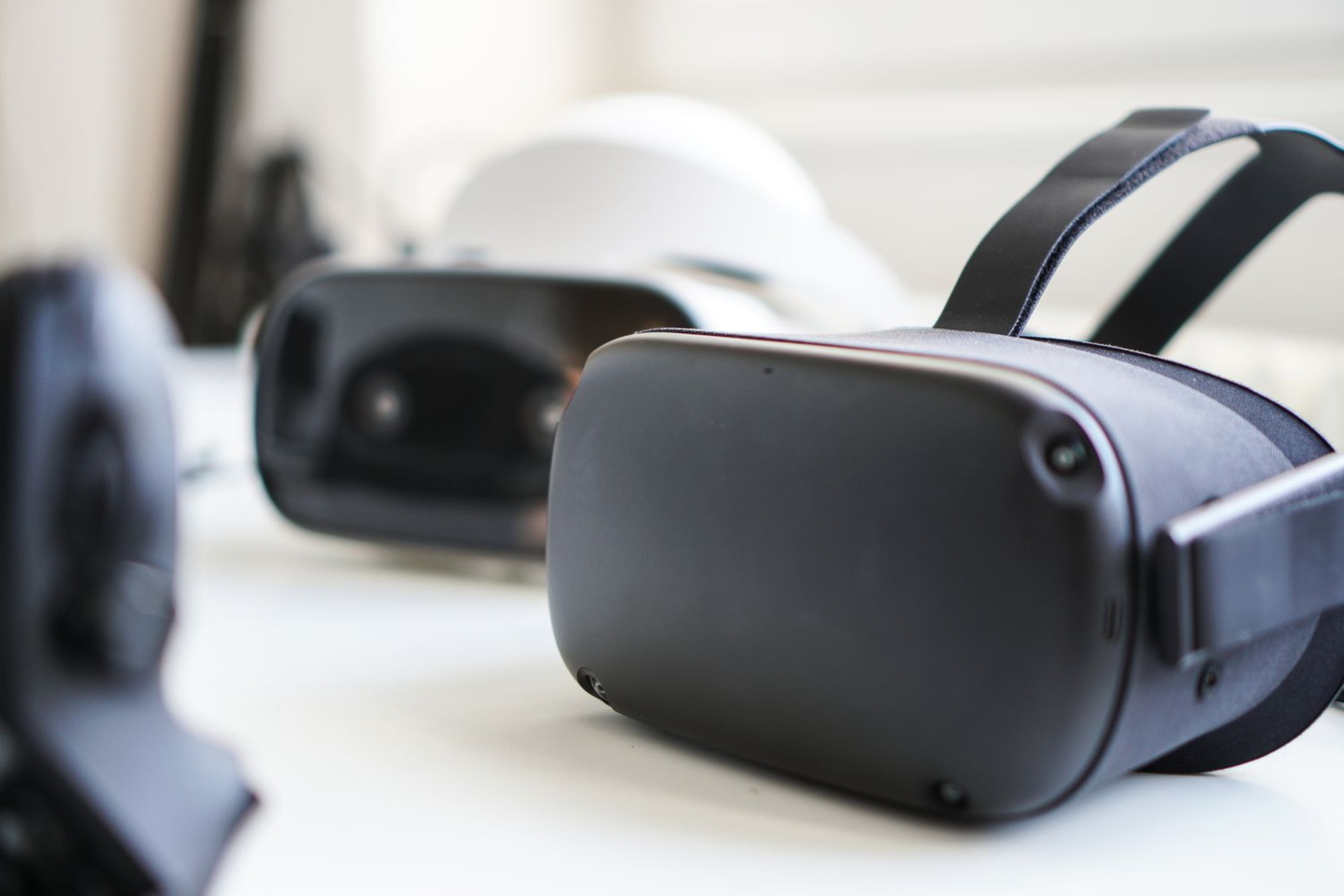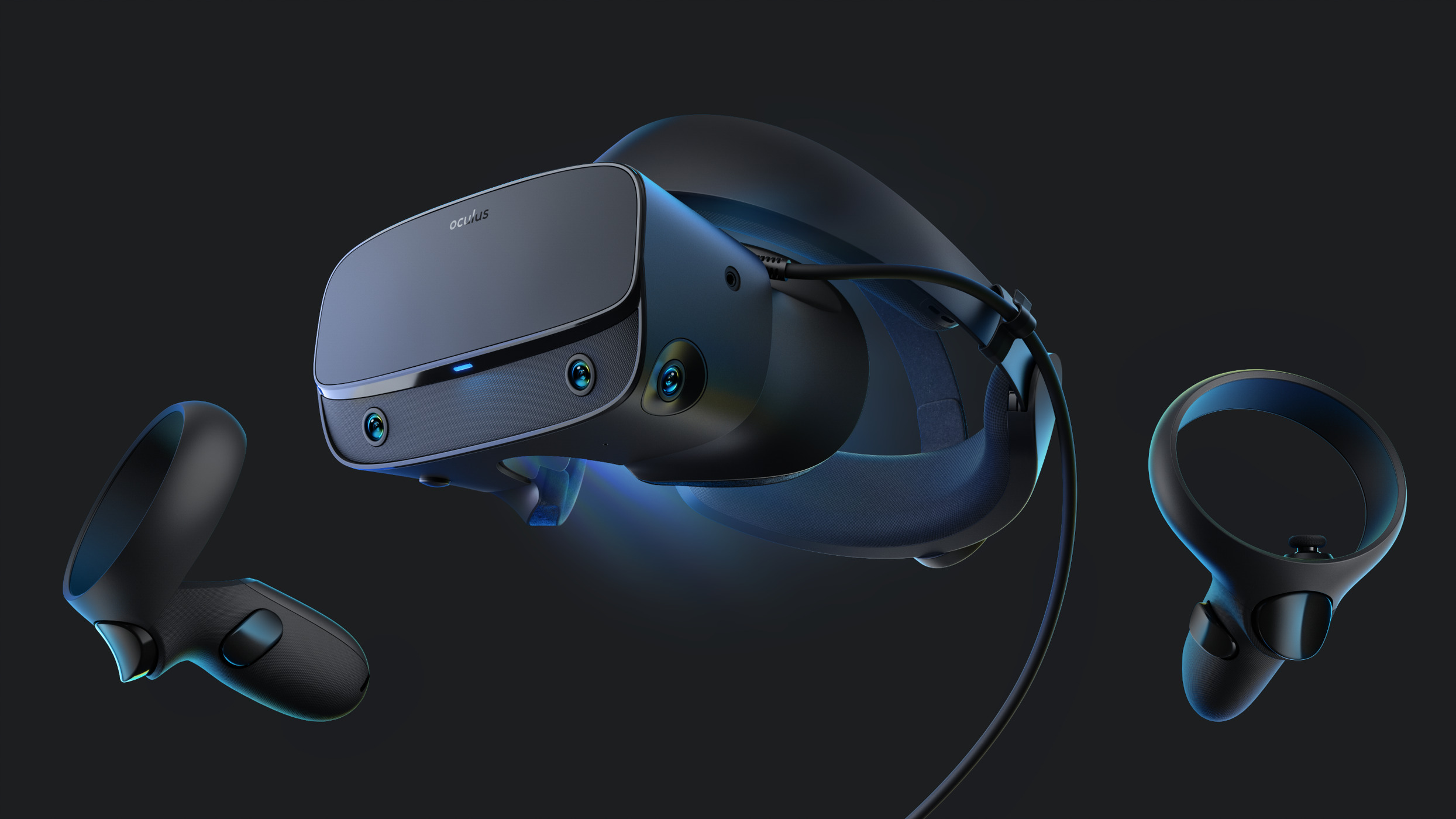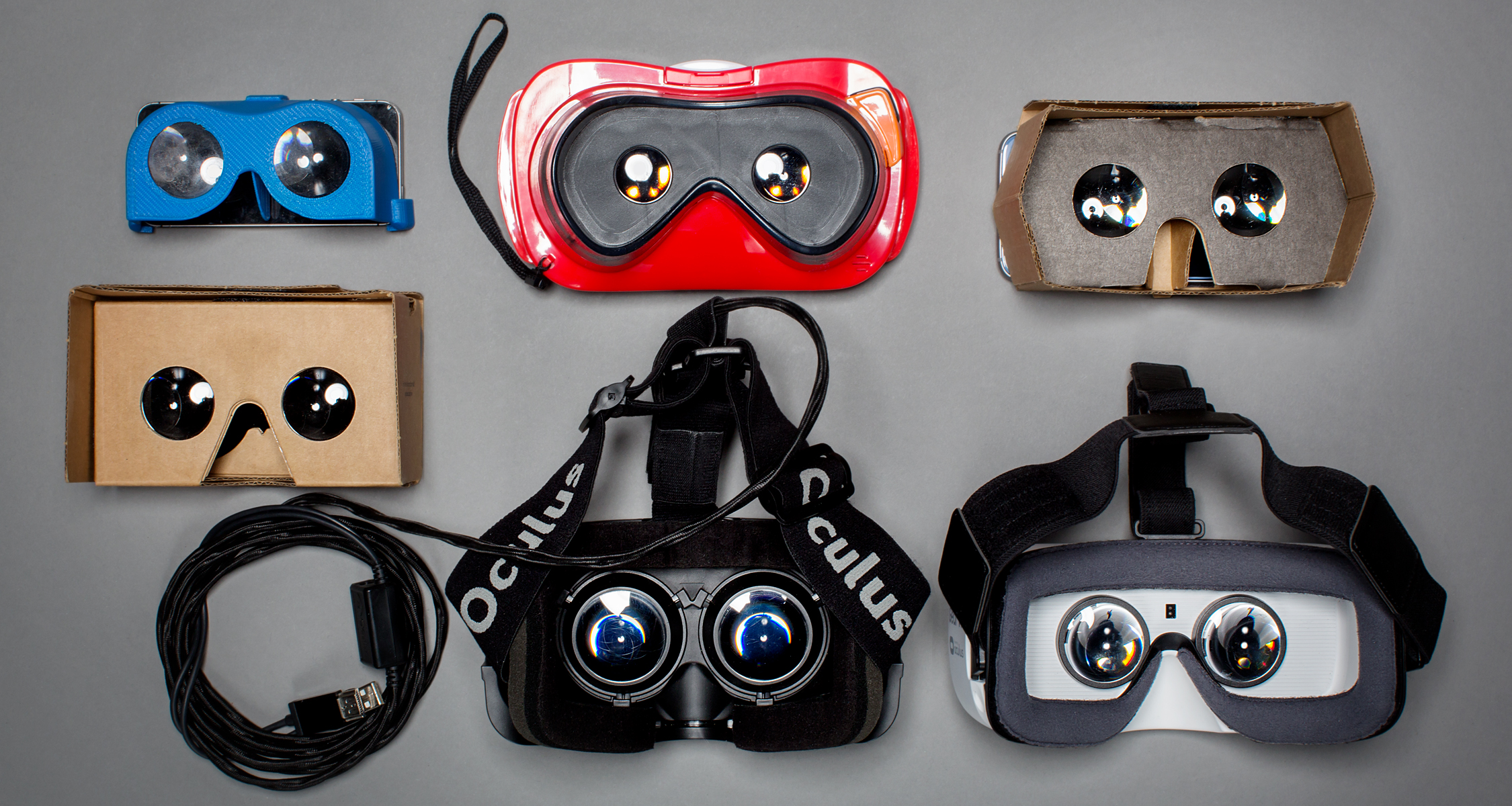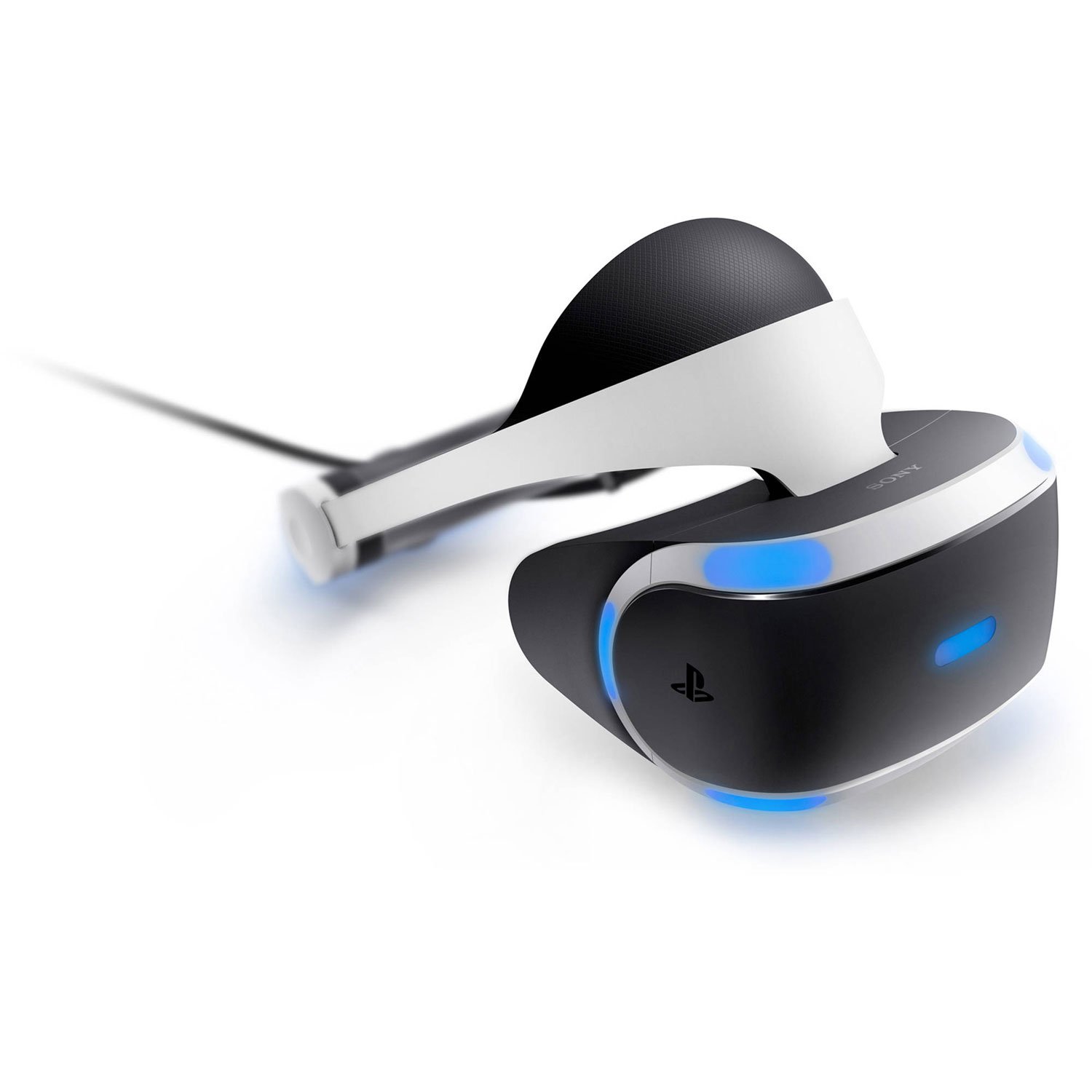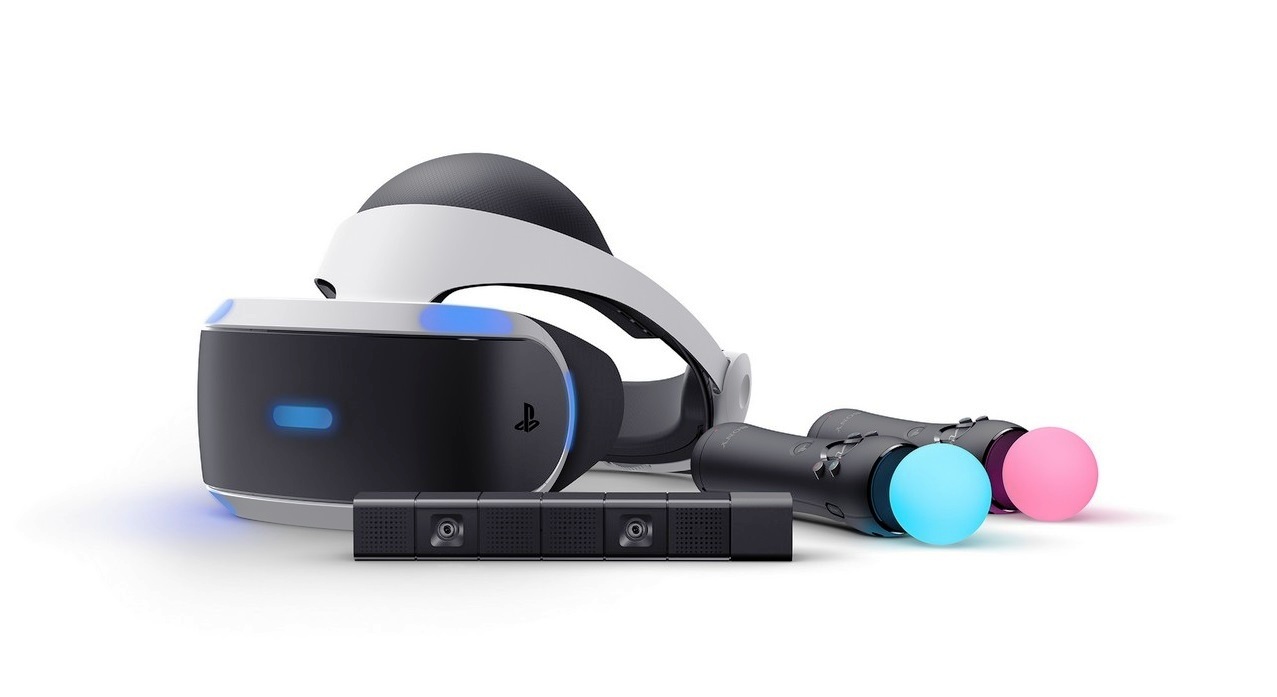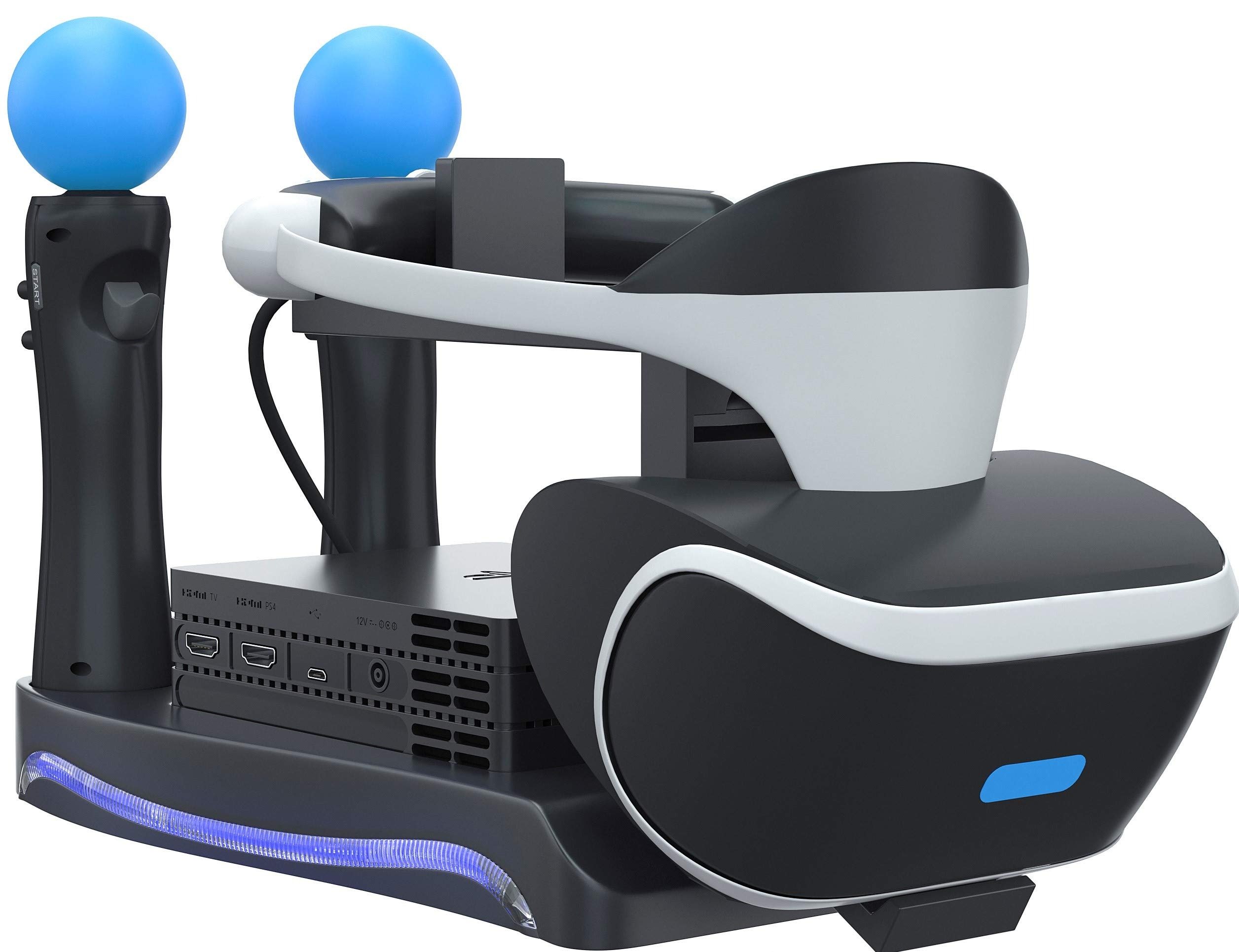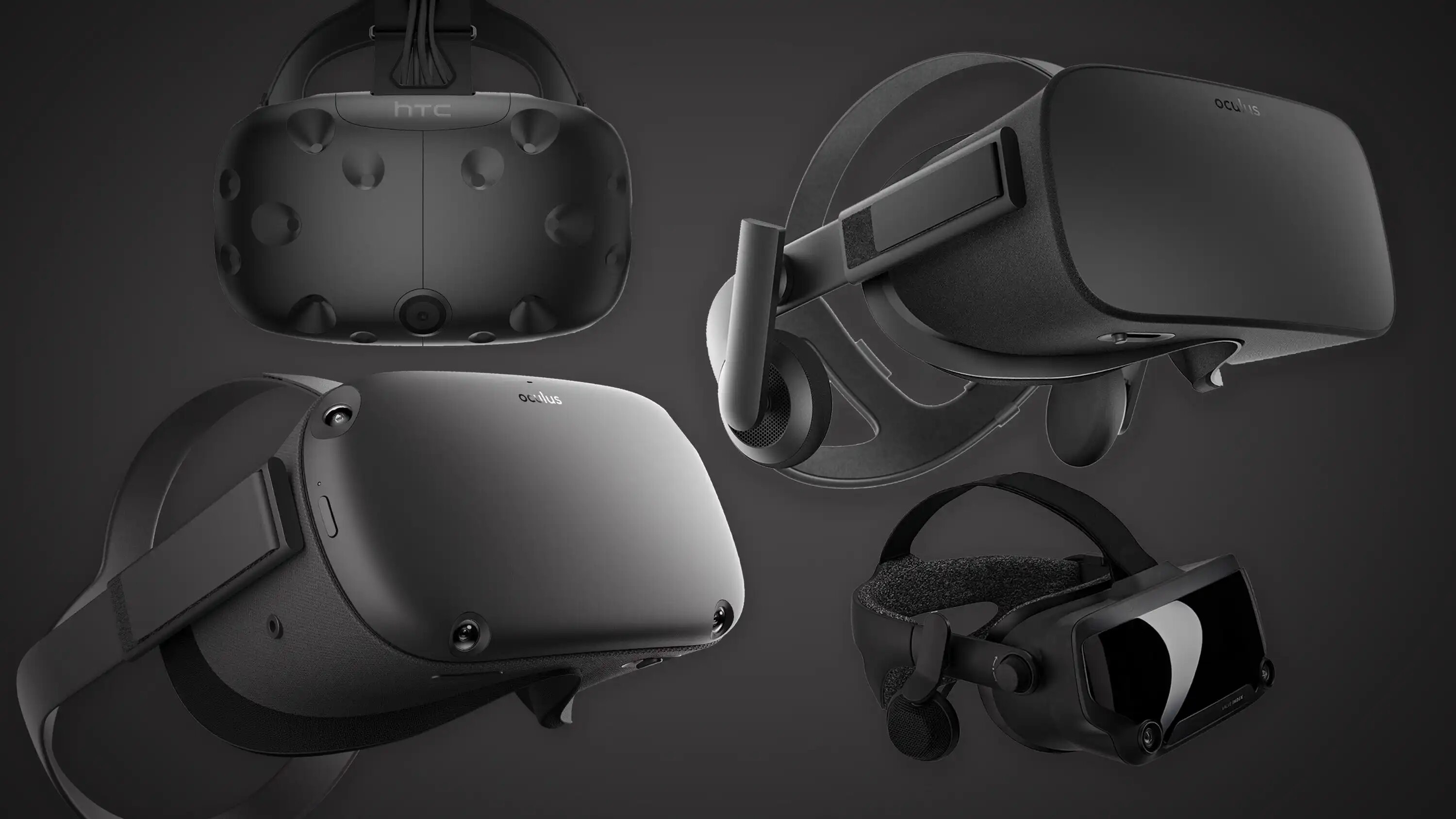Introduction
Virtual Reality (VR) headsets have revolutionized the way we experience digital content, transporting us to immersive and lifelike virtual worlds. Whether you’re a gaming enthusiast, a tech-savvy individual, or simply curious about the latest advancements in technology, owning a VR headset can provide you with an unparalleled level of entertainment and interactivity.
In recent years, VR headsets have become more affordable and accessible, offering an extensive range of options to suit different needs and preferences. From PC-based VR headsets to standalone devices and mobile solutions, there is a VR headset out there for everyone.
Before diving into the world of VR headsets, it’s important to understand how they work and what to consider before making a purchase. This article aims to guide you through the essential aspects to look out for, ensuring that you make an informed decision when buying a VR headset.
In the following sections, we will explore the different types of VR headsets available on the market, discuss the features you should prioritize, and provide valuable insights to help you find the perfect VR headset for your needs.
So, if you’re ready to embark on an exciting virtual journey, let’s delve deeper into the world of VR headsets and explore the factors that will help you choose the right one for you.
Understanding VR Headsets
Virtual Reality (VR) headsets are devices that immerse users in a simulated 3D environment, allowing them to interact with a digital world as if they were a part of it. These headsets utilize advanced technology to provide a sensory experience that engages multiple senses, such as vision and hearing, to create a realistic and interactive virtual environment.
At its core, a VR headset consists of two essential components – a display system and a tracking system. The display system, typically in the form of high-resolution screens or lenses, presents images or videos to the user’s eyes, enveloping them in a visually captivating virtual landscape. The tracking system, on the other hand, keeps track of the user’s movements and adjusts the perspective accordingly, ensuring a seamless and responsive experience.
The quality of a VR headset is determined by various factors, including the display resolution, field of view (FOV), refresh rate, and tracking precision. Higher display resolutions ensure sharper and more detailed visuals, while a wider FOV enhances the sense of immersion by expanding the user’s peripheral vision.
Another important aspect of VR headsets is the input method. Some headsets come with dedicated controllers or peripherals that allow users to interact with the virtual world more intuitively, while others may rely on hand gestures or gaze-based controls.
It’s worth noting that the computing power required to run VR applications is generally higher than that of conventional gaming or multimedia tasks. As a result, some VR headsets require a compatible gaming PC or console to operate, while others are designed to be standalone devices that don’t rely on external hardware.
In recent years, mobile VR headsets have gained popularity, as they offer a more affordable and accessible entry point into the world of VR. These headsets utilize smartphones as the display and processing unit, granting users the freedom to experience VR content with just a smartphone and a compatible headset.
By understanding the basic principles and components of VR headsets, you can make more informed decisions when it comes to selecting the right device for your needs. In the following sections, we will explore the different types of VR headsets available on the market and the key considerations to keep in mind before making a purchase.
Considerations Before Buying
Before diving into the world of virtual reality and purchasing a VR headset, there are several important factors to consider. These considerations will help you find a headset that aligns with your needs, preferences, and budget. Let’s explore these factors in detail:
- Intended Use: Determine how you plan to use the VR headset. Is it primarily for gaming, multimedia entertainment, educational purposes, or professional applications? Different headsets offer varying features and capabilities suited to different use cases.
- Platform Compatibility: Check the compatibility of the VR headset with your desired platform. Some headsets are designed specifically for certain platforms, such as PlayStation VR for Sony’s PlayStation console, Oculus Rift for PC, or Oculus Quest for standalone VR experiences.
- Budget: Set a budget for your VR headset purchase. The price range for VR headsets can vary widely, from affordable mobile VR solutions to high-end PC-based headsets. Keep in mind that higher-priced headsets often come with more advanced features and better overall performance.
- Comfort and Fit: Consider the comfort and fit of the headset, especially if you plan on using it for extended periods. Look for headsets with adjustable straps, cushioned padding, and a balanced weight distribution to ensure a comfortable experience.
- Tracking Technology: Pay attention to the tracking technology used by the headset. Some headsets use external sensors or cameras for precise positional tracking, while others have built-in sensors that provide inside-out tracking. Choose a tracking system that suits your desired level of accuracy and convenience.
- Content Library: Explore the available VR content libraries and consider the variety and quality of content provided. Look for a headset that offers a diverse range of immersive experiences, including games, videos, educational apps, and interactive simulations.
- Display Quality: Examine the display quality of the headset, including factors like resolution, pixel density, and screen type. Higher resolution and pixel density generally result in sharper and more immersive visuals.
- Comfort and Fit: Consider the comfort and fit of the headset, especially if you plan on using it for extended periods. Look for headsets with adjustable straps, cushioned padding, and a balanced weight distribution to ensure a comfortable experience.
- Connectivity and Compatibility: Check the connectivity options and compatibility with other devices. Some headsets offer wireless connectivity, allowing for a more seamless and flexible VR experience. Others may have additional features like Bluetooth compatibility or the ability to connect to external accessories.
By carefully evaluating these considerations, you can narrow down your options and choose a VR headset that offers the best combination of features, performance, and value for your specific needs. In the following sections, we will explore the different types of VR headsets available on the market and delve deeper into their features and capabilities.
Types of VR Headsets
When it comes to VR headsets, there are three main types to consider: PC VR headsets, standalone VR headsets, and mobile VR headsets. Each type offers a unique set of features and capabilities, catering to different user preferences and constraints. Let’s explore each type in detail:
- PC VR Headsets: These headsets rely on a powerful gaming PC or console to deliver a high-end VR experience. They offer advanced features like high-resolution displays, wide field of view, and precise tracking. PC VR headsets, such as the Oculus Rift or HTC Vive, provide immersive and graphically intensive experiences but require a capable gaming setup to run smoothly. They offer access to a wide range of VR games and experiences available on platforms like SteamVR.
- Standalone VR Headsets: Standalone VR headsets are self-contained devices that don’t rely on external hardware. They have built-in processors, displays, and tracking systems, offering a more portable and user-friendly solution. Standalone headsets like the Oculus Quest or Lenovo Mirage Solo combine the convenience of mobile VR with improved performance and more robust tracking capabilities. While they may not match the graphical fidelity of PC VR headsets, standalone headsets offer a compelling VR experience without the need for a separate gaming PC.
- Mobile VR Headsets: Mobile VR headsets, as the name suggests, harness the power of smartphones to deliver VR content. These headsets, such as Samsung Gear VR or Google Cardboard, use a smartphone as the display and processing unit. By leveraging the smartphone’s built-in sensors and display, mobile VR headsets offer a cost-effective and accessible entry into the world of VR. While the visual quality and tracking precision may not match that of PC or standalone headsets, mobile VR headsets provide a convenient way to enjoy VR experiences on the go.
It’s important to note that the type of VR headset you choose will depend on your specific requirements and constraints. If you’re a hardcore gamer seeking the highest levels of immersion and graphical fidelity, a PC VR headset may be the right choice. However, if portability and ease of use are more important, a standalone or mobile VR headset could be a better fit. Consider your budget, computing power, and intended use to make an informed decision.
Now that we have explored the different types of VR headsets available, let’s move on to the next section, where we will discuss the key features and specifications to consider when buying a VR headset.
PC VR Headsets
PC VR headsets offer the most immersive and high-fidelity virtual reality experiences currently available. These headsets rely on a powerful gaming PC or console to deliver cutting-edge graphics, precise tracking, and a wide range of interactive experiences. If you’re a hardcore gamer or tech enthusiast looking for the best possible VR experience, a PC VR headset may be the right choice for you.
Some of the most popular PC VR headsets include the Oculus Rift, HTC Vive, and Valve Index. These headsets boast high resolutions, typically ranging from 1080p to 1440p per eye, resulting in vivid and crystal-clear visuals. They also offer a wide field of view (FOV), allowing for a more immersive experience by simulating a realistic peripheral vision.
In addition to resolution and FOV, PC VR headsets prioritize tracking precision and accuracy. They often utilize external sensors or cameras to track the position of the headset and controllers, enabling precise tracking of movements and providing a truly immersive virtual environment.
One of the key advantages of PC VR headsets is the extensive library of VR games and experiences available on platforms like SteamVR and the Oculus Store. These platforms offer a wide range of games, from action-packed adventures to immersive simulations, catering to various interests and preferences.
However, it’s important to note that PC VR headsets require a powerful gaming PC or console to function properly. The recommended system specifications can vary between headsets, but a capable GPU, sufficient RAM, and a fast processor are usually prerequisites for a smooth VR experience.
Investing in a PC VR headset also means dedicating a space in your home for VR gameplay, as the setup often involves placing external sensors or cameras in strategic positions for optimal tracking performance.
Overall, PC VR headsets offer the most advanced immersive experiences for those with a compatible gaming setup. If you’re willing to invest in a high-end gaming PC and want to explore the full potential of virtual reality, a PC VR headset is a great option.
In the next section, we will discuss standalone VR headsets, which provide a more portable and user-friendly VR experience without the need for external hardware.
Standalone VR Headsets
Standalone VR headsets offer a convenient and portable solution for experiencing virtual reality without the need for external hardware or wires. These self-contained devices have built-in processors, displays, and tracking systems, providing a hassle-free VR experience that can be enjoyed anywhere.
Leading the way in the standalone VR market is the Oculus Quest, a headset that offers a high-quality VR experience without the need for a gaming PC or console. The Quest features an OLED display with a resolution of 1440 x 1600 pixels per eye, delivering vibrant visuals and crisp images. With its built-in Qualcomm Snapdragon processor and 6 degrees of freedom (6DoF) tracking, the Quest provides smooth and responsive tracking, allowing for immersive gameplay and realistic interactions.
Standalone VR headsets like the Quest also offer the convenience of wireless freedom, allowing users to move around freely without being tethered to a PC or console. This makes them ideal for room-scale VR experiences and engaging gameplay. Additionally, many standalone headsets include built-in speakers or audio ports, providing integrated sound for an immersive audio experience.
While standalone headsets may not match the graphical fidelity and performance of high-end PC VR headsets, they provide an impressive level of immersion and are an excellent option for those seeking a portable VR solution. They are particularly well-suited for gaming and entertainment on the go.
Furthermore, standalone headsets often come with a dedicated content store, such as the Oculus Store, which offers a growing library of games and applications specifically optimized for the device. This ensures a wide range of experiences and entertainment options for users to explore.
One limitation of standalone VR headsets is that they may have limited storage capacity compared to PC VR headsets. However, many standalone headsets provide the option to expand storage through microSD cards, allowing users to download and store more content.
If you value convenience, portability, and a great out-of-the-box VR experience, standalone VR headsets like the Oculus Quest are a fantastic choice. They offer a balance between performance and ease of use, allowing you to enjoy VR anywhere, anytime.
In the next section, we will discuss mobile VR headsets, which leverage the power of smartphones to provide a budget-friendly entry into the world of virtual reality.
Mobile VR Headsets
Mobile VR headsets bring virtual reality experiences to a wider audience by leveraging the power of smartphones. These headsets offer a budget-friendly and accessible entry point into the world of VR, allowing users to transform their smartphones into immersive virtual reality devices.
Mobile VR headsets, such as Samsung Gear VR or Google Cardboard, operate by inserting a compatible smartphone into the headset and utilizing its display and processing capabilities. The smartphone acts as the screen and power source, delivering VR content and tracking the user’s head movements.
One of the key advantages of mobile VR headsets is their affordability and ease of use. Compared to PC or standalone VR headsets, mobile VR headsets are significantly cheaper, making them accessible to a wider range of users. They also eliminate the need for additional hardware, as users can rely on their existing smartphones to power the VR experience.
While mobile VR headsets may not offer the same level of graphical fidelity and tracking precision as higher-end devices, they still provide an enjoyable immersive experience. They are suitable for casual gaming, 360-degree videos, and virtual tours, making them a great entry point for newcomers to VR.
Mobile VR headsets also benefit from an extensive library of VR apps and experiences available for download. App stores, such as Google Play Store or the Samsung Gear VR store, offer a variety of VR content, including games, videos, educational apps, and virtual tours.
It’s worth noting that the quality of the VR experience on mobile headsets can vary depending on the smartphone used. Higher-end smartphones with more powerful processors and higher resolution displays will generally deliver a better VR experience.
Additionally, mobile VR headsets offer the advantage of portability. They are lightweight and compact, allowing users to bring their VR experience wherever they go. This makes them ideal for travel or sharing VR experiences with friends and family.
While mobile VR headsets provide an accessible and affordable entry into virtual reality, they do have some limitations. The tracking capabilities may not be as precise as in PC or standalone headsets, and the processing power of smartphones may limit the complexity of the VR experiences that can be rendered.
If you’re looking to dip your toes into virtual reality without breaking the bank, mobile VR headsets are a great choice. They offer a budget-friendly, portable, and convenient way to explore the world of virtual reality using your existing smartphone.
In the next section, we will explore the desirable features to consider when purchasing a VR headset, regardless of its type.
Features to Look for
When purchasing a VR headset, regardless of its type, there are several key features and specifications to consider. These features will impact your overall VR experience and ensure that you choose a headset that meets your needs and preferences. Let’s explore these features in detail:
- Display Quality: Look for a headset with a high-resolution display and good pixel density. Higher resolutions ensure sharper and more detailed visuals, enhancing the immersion of the VR experience.
- Field of View: Consider the field of view (FOV) offered by the headset. A wider FOV provides a more expansive view of the virtual world, enhancing the sense of immersion by simulating natural peripheral vision.
- Refresh Rate: The refresh rate refers to the number of times the display refreshes the image per second. A higher refresh rate results in smoother and more fluid visuals, reducing motion sickness and improving the overall experience.
- Tracking System: Evaluate the tracking capabilities of the headset. Look for systems that offer six degrees of freedom (6DoF), allowing for precise positional and rotational tracking. This ensures accurate and responsive movement within the virtual environment.
- Input Method: Consider the input method provided by the headset. Some headsets come with dedicated controllers or peripherals, enabling more intuitive and immersive interactions. Others may rely on hand gestures or gaze-based controls.
- Comfort and Fit: Check the comfort and fit of the headset. Look for adjustable headbands, cushioned padding, and a balanced weight distribution to ensure a comfortable experience, especially during extended VR sessions.
- Device Compatibility: Ensure that the headset is compatible with your desired platform or device. Some headsets are designed specifically for certain platforms, such as PC or console, while others offer compatibility with multiple platforms.
- Price Range: Set a budget and consider the price range of the headsets within your budget. There are options available at various price points, offering different features and levels of performance.
By evaluating these features, you can prioritize what is most important to you and make an informed decision when choosing a VR headset. It’s essential to strike a balance between performance, comfort, and cost to find a headset that suits your needs.
Now that we have discussed the important features to look for, let’s move on to the final section, where we will wrap up the main points and offer some final thoughts on buying a VR headset.
Display Quality
When it comes to VR headsets, display quality plays a crucial role in delivering an immersive and captivating virtual reality experience. The display technology and resolution of the headset directly impact the clarity, sharpness, and overall visual fidelity of the virtual world. As a result, it’s important to consider display quality when purchasing a VR headset.
High-resolution displays are a key factor in determining the level of detail and realism in VR. A higher resolution means that more pixels are packed into the display, resulting in sharper and more defined visuals. Common resolutions for VR headsets range from 1080p to 1440p per eye, with higher-end headsets pushing beyond 1440p. The higher the resolution, the more refined and lifelike the virtual environment will appear.
In addition to resolution, pixel density is also important. Pixel density refers to the number of pixels per inch (PPI) on the display. A higher pixel density ensures that individual pixels are less noticeable, leading to smoother and more precise visuals. This is especially important when the display is viewed up close, as in the case of VR headsets.
Furthermore, the type of display technology used can also impact the overall display quality. OLED (Organic Light Emitting Diode) displays are known for their vibrant colors, deep blacks, and excellent contrast levels, providing a visually stunning experience. LCD (Liquid Crystal Display) displays, on the other hand, may offer brighter and more accurate colors, but they typically have lower contrast levels compared to OLED displays.
Aside from resolution and display technology, the refresh rate is another critical factor to consider. The refresh rate determines how many times the display refreshes the image per second. Higher refresh rates, such as 90Hz or 120Hz, contribute to smoother and more fluid visuals, reducing motion blur and providing a more comfortable VR experience. A higher refresh rate can also help alleviate motion sickness for some users.
Ultimately, choosing a VR headset with excellent display quality ensures a more immersive and visually engaging experience. Crisp, detailed visuals combined with vibrant colors and a high refresh rate make the virtual world come to life, enhancing the sense of presence and realism in your VR adventures.
When purchasing a VR headset, consider the resolution, pixel density, display technology, and refresh rate to find a headset that meets your visual expectations and provides an immersive and visually captivating virtual reality experience.
In the next section, we will explore another important consideration when buying a VR headset – the field of view (FOV).
Field of View
The field of view (FOV) is an important aspect to consider when purchasing a VR headset as it directly impacts the level of immersion and realism in your virtual reality experiences. FOV refers to the extent of the visual environment that can be seen at any given moment within the headset.
A wider FOV provides a more expansive and encompassing view, mimicking the natural peripheral vision that we experience in the real world. It creates a sense of being fully immersed in the virtual environment, maximizing the feeling of presence and enhancing the overall VR experience.
The FOV of VR headsets can vary, typically ranging from around 90 to 120 degrees. A wider FOV allows you to see more of the virtual world without needing to turn your head extensively. This can greatly enhance gameplay in VR games, providing a more natural and enjoyable experience.
It’s important to note that the FOV can differ among different VR headsets. Some headsets may offer a narrower FOV, resembling more of a tunnel vision effect, while others provide a wider FOV that creates a more panoramic and immersive view.
A wider FOV not only improves the overall realism and immersion but also enhances the peripheral vision in VR experiences. This becomes particularly important when interacting with objects or characters that are not directly in front of you. With a wider FOV, you will have a better sense of spatial awareness and will be able to react more naturally to stimuli in the virtual environment.
However, it’s worth noting that a wider FOV can also increase the demands on the headset’s graphics processing capabilities. This means that your computer or device will need to render a larger field of view, potentially affecting performance and frame rate.
When considering the FOV, it’s important to find a balance between a wide FOV and the system requirements of your chosen VR headset. Higher-end headsets often provide a wider FOV but may require a more powerful computer or device to drive the VR experience smoothly.
By selecting a VR headset with a wide FOV, you can enjoy an immersive and visually stunning experience that feels more like stepping into a whole new world. It enhances the level of presence and realism, allowing you to fully engage with the virtual environment and immerse yourself in your virtual adventures.
In the next section, we will discuss another crucial aspect to consider when purchasing a VR headset – the refresh rate.
Refresh Rate
The refresh rate is an important factor to consider when purchasing a VR headset as it directly affects the visual quality and comfort of your virtual reality experience. The refresh rate refers to the number of times the display refreshes the image per second, and it is measured in Hertz (Hz).
A higher refresh rate results in smoother, more fluid visuals, reducing motion blur and enhancing the overall sense of immersion. It ensures that the virtual environment stays in sync with your movements, providing a more realistic and comfortable experience.
Many VR headsets offer a standard refresh rate of 60Hz, while some higher-end headsets have refresh rates of 90Hz or even 120Hz. The higher the refresh rate, the less apparent motion blur and flickering you will experience, resulting in a more comfortable and visually appealing VR experience.
A higher refresh rate not only minimizes motion blur but also reduces the likelihood of motion sickness. Motion sickness can occur when there is a disconnect between what your eyes see and the movements your body feels. A higher refresh rate helps to align the visuals with your head movements more accurately, reducing the chances of experiencing discomfort or nausea.
It’s important to note that achieving higher refresh rates requires more processing power from your computer or device. You will need a capable gaming PC or console that can support the increased demands on the graphics processing unit (GPU) to maintain a consistent frame rate.
However, it’s also worth considering that not all VR content or applications will benefit greatly from an ultra-high refresh rate. Applications with slower or less interactive experiences may not require a refresh rate beyond the standard 60Hz. Therefore, the importance of a higher refresh rate depends on the type of VR content you plan to engage with.
When choosing a VR headset, it’s essential to weigh the benefits of a higher refresh rate against the capabilities of your computing system and your intended use. If you’re a hardcore gamer or plan to engage in fast-paced VR experiences, investing in a headset with a higher refresh rate can greatly enhance your overall VR experience.
By selecting a VR headset with a higher refresh rate, you can enjoy smoother, more fluid visuals that reduce motion blur, minimize discomfort, and provide a more immersive and enjoyable virtual reality experience.
In the next section, we will explore another crucial aspect to consider when purchasing a VR headset – the tracking system.
Tracking System
The tracking system is a crucial aspect to consider when purchasing a VR headset as it determines how the headset tracks your movements within the virtual environment. A reliable and accurate tracking system is essential for an immersive and realistic VR experience.
There are two main types of tracking systems commonly used in VR headsets: external sensor-based and inside-out tracking.
External sensor-based tracking requires the use of external sensors or cameras placed around the room to track the position of the headset and controllers. These sensors detect infrared light emitted by the headset or reflective markers, enabling precise and responsive tracking. External sensor-based tracking provides highly accurate positional and rotational tracking, allowing for a more realistic and immersive experience.
Inside-out tracking, on the other hand, uses built-in sensors and cameras within the headset to track your movements. This eliminates the need for external sensors or cameras, providing a more simplified and portable VR setup. Inside-out tracking offers the freedom to move around without restrictions and is often found in standalone or mobile VR headsets. While inside-out tracking may be less accurate compared to external sensor-based tracking, technological advancements have greatly improved its reliability in recent years.
Some VR headsets also offer hand or controller tracking. This allows the headset to track the movements of your hands or controllers, enhancing the level of interactivity and immersion within the virtual environment. Hand or controller tracking enables natural interactions with virtual objects, providing a more intuitive and immersive VR experience.
When considering the tracking system of a VR headset, it’s important to determine the level of accuracy and responsiveness required for your intended use. Hardcore gamers and enthusiasts may prefer the precision of external sensor-based tracking, while casual users may find the convenience and simplicity of inside-out tracking more appealing.
It’s worth noting that the tracking system of a VR headset can also be influenced by external factors such as lighting conditions and the presence of reflective surfaces. Ensuring an optimal environment for tracking can contribute to a smoother and more reliable tracking experience.
By selecting a VR headset with a reliable and accurate tracking system, you can enjoy a more realistic and immersive VR experience. Whether it’s external sensor-based tracking or inside-out tracking, a robust tracking system enhances your ability to interact with the virtual world and brings it to life.
In the next section, we will explore the input methods available for VR headsets and how they impact the overall user experience.
Input Method
The input method of a VR headset refers to how users can interact with the virtual world. It plays a crucial role in the level of immersion and interactivity experienced during virtual reality experiences. Different VR headsets offer various input methods, each with its own advantages and considerations.
One common input method is through handheld controllers. These controllers typically feature buttons, triggers, and touch-sensitive surfaces that mimic the functions of a gamepad. Handheld controllers provide precise and tactile control, allowing users to interact with objects, navigate menus, and trigger actions within the virtual world. They offer a familiar gaming experience and are well-suited for games and applications that require precise gestures and actions.
Some VR headsets also provide hand tracking capabilities, which enable users to interact with the virtual environment using their bare hands. Hand tracking relies on the built-in sensors and cameras of the headset to detect and interpret the movements and gestures of the user’s hands. This method offers a more natural and intuitive way of interacting with the virtual world. However, it is worth noting that hand tracking technology is still evolving, and its level of accuracy and responsiveness may vary between different headsets.
Gaze-based controls are another input method used in some VR headsets, particularly in mobile or standalone devices. Gaze-based controls rely on the user’s gaze direction to select and interact with objects in the virtual environment. By simply looking at an object or button for a certain period, users can trigger actions or make selections. Gaze-based controls provide a simple and intuitive input method, especially for experiences with limited interaction or for users who prefer a more casual or relaxed VR experience.
Gesture-based controls, though less commonly seen in current VR headsets, involve using hand gestures or body movements to interact with the virtual world. This can include actions like waving, pointing, or making specific hand motions to execute commands or trigger certain actions. Gesture-based controls offer a more immersive and physical way of interacting with the virtual environment, but they may require specific cameras or sensors to accurately capture and interpret the user’s movements.
It’s important to consider the input method that best suits your preferences and the type of virtual experiences you plan to engage with. Handheld controllers offer versatility and precision, making them ideal for gaming and interactive applications. Hand tracking and gaze-based controls provide a more natural and intuitive way of interaction, offering a seamless and immersive experience. Gesture-based controls, while less prevalent, offer a physical and engaging means of interaction, but may require additional hardware or specific gestures.
Ultimately, the input method contributes to the overall feeling of presence and immersion in virtual reality. It allows users to directly engage with and manipulate the virtual environment, bringing it to life and enhancing the overall enjoyment of VR experiences.
In the next section, we will discuss an often overlooked but crucial aspect of VR headsets – comfort and fit.
Comfort and Fit
Comfort and fit are often overlooked aspects when purchasing a VR headset, yet they play a crucial role in ensuring an enjoyable and immersive virtual reality experience. A comfortable and well-fitting headset can make a significant difference in your overall comfort and level of engagement during extended VR sessions.
When considering comfort, it’s important to look for headsets that offer adjustable straps and cushioned padding. An adjustable strap allows you to customize the fit to your head size and shape, ensuring a secure and comfortable fit. Cushioned padding, especially around the areas that come into contact with your face and forehead, can help distribute the weight of the headset and prevent discomfort or pressure points.
Additionally, the weight distribution of the headset is another crucial factor in determining comfort. Headsets that are well-balanced, with the weight evenly distributed, will reduce strain and fatigue during extended use. A headset that feels too front-heavy can put unnecessary strain on your neck and can impede your overall comfort and enjoyment of the VR experience.
The materials used in the construction of the headset also contribute to comfort. Headsets made from lightweight and breathable materials, such as foam and fabric, can help prevent discomfort caused by heat and perspiration during prolonged use. Avoid headsets with materials that may cause skin irritation or discomfort.
Fit is also an essential consideration when choosing a VR headset. The headset should provide a secure fit that does not slide or move excessively during use. This prevents distractions and maintains the immersive experience. Some headsets offer adjustable IPD (interpupillary distance) settings, allowing you to align the lenses with your specific eye spacing for optimal viewing comfort and clarity.
If possible, it’s recommended to try on a headset before purchasing to assess the comfort and fit. Consider visiting a retail store or attending VR expos to experience different headsets firsthand and find the one that best suits your preferences.
Remember that everyone’s head shape and size can vary, so what may be comfortable for one person may not be for another. Prioritize your own comfort and fit preferences before making a purchase.
Choosing a VR headset that offers both comfort and a secure fit will enable you to fully immerse yourself in the virtual environment without being distracted or experiencing discomfort. A comfortable headset enhances the overall enjoyment of VR experiences and encourages longer, more immersive sessions.
In the next section, we will discuss another important consideration – device compatibility.
Device Compatibility
Device compatibility is a crucial consideration when purchasing a VR headset, as it ensures that the headset will work seamlessly with your chosen platform or device. Not all VR headsets are compatible with every system or device, so it’s important to ensure compatibility to avoid any potential compatibility issues.
Firstly, consider the platform or ecosystem that the VR headset is designed for. Some headsets, like the Oculus Rift or HTC Vive, are intended specifically for PC gaming. These headsets require a compatible gaming PC or laptop with sufficient specifications to run the VR content smoothly. Make sure that your computer meets the recommended system requirements of the headset before making a purchase.
Other headsets, such as the PlayStation VR, are designed for use with specific gaming consoles. PlayStation VR, for example, is compatible with the PlayStation 4 and PlayStation 5 systems. Ensure that the VR headset you choose is compatible with the specific console you own.
Standalone VR headsets, like the Oculus Quest, offer a more self-contained experience and do not require external devices or consoles. They have built-in processors and screens, providing a standalone VR solution. However, it’s important to verify if the standalone headset you are considering is compatible with the applications and games you wish to access.
Additionally, consider the compatibility within the VR ecosystem itself. Each platform often has its own dedicated content store. For example, Oculus headsets have access to the Oculus Store, while HTC Vive utilizes the SteamVR platform. Ensure that the VR headset you choose gives you access to the games and applications you desire through its respective content store.
It’s also essential to check if the VR headset supports the specific tracking technology or input methods you prefer. For example, if you want to use hand tracking or specific controllers, verify that the headset supports these features.
Finally, consider the compatibility with other devices or accessories you may want to use alongside your VR headset. This could include controllers, headphones, or additional peripherals. Ensure that the headset has the necessary connectivity options or compatibility with Bluetooth devices if you plan on expanding your VR setup.
By considering device compatibility before purchasing a VR headset, you can ensure a seamless and hassle-free experience, avoiding any compatibility issues that may limit your ability to fully enjoy the virtual reality world.
In the next section, we will discuss an important aspect that is often a deciding factor for many users – the price range of VR headsets.
Price Range
Price range is an important consideration when purchasing a VR headset, as it determines the affordability and value you can expect from your investment. VR headsets come in a wide range of prices, offering different features and performance levels to suit various budgets and needs.
High-end PC VR headsets, such as the Oculus Rift S or the Valve Index, typically have a higher price point. These headsets offer advanced features and cutting-edge technology, delivering top-of-the-line performance and a high level of immersion. They are often favored by gaming enthusiasts and professionals looking for the best possible VR experience. However, it’s important to also consider the cost of a compatible gaming PC, as these headsets require a powerful system to run smoothly.
Standalone VR headsets, like the Oculus Quest 2 or the HTC Vive Focus Plus, provide a more affordable and accessible entry point into VR. They offer a self-contained VR experience without the need for additional hardware or gaming consoles. These headsets strike a balance between performance and affordability, providing a good level of immersion and functionality at a lower price compared to high-end PC headsets.
Mobile VR headsets, such as the Samsung Gear VR or Google Cardboard, are the most budget-friendly option within the VR market. These headsets utilize smartphones as the display and processing unit, providing a basic VR experience at an accessible price point. While they may not offer the same level of visual quality or tracking precision as higher-end headsets, they offer a cost-effective solution for casual users or those new to VR.
When considering the price range, it’s important to assess the features and performance that are essential for your VR usage. Determine your budget and prioritize the features that matter most to you. It’s also worth considering the content library associated with the headset and the availability of games and applications within your desired price range. Additionally, keep in mind any additional costs, such as accessories or software, that may be required for a complete VR setup.
Ultimately, finding the right balance between price and features will ensure that you make a well-informed decision that aligns with your budget and VR expectations. VR headsets are available at various price points, allowing you to find a suitable option that offers the desired level of immersion and functionality within your budgetary constraints.
In the final section, we will share some closing thoughts and considerations as you make your final decision in purchasing a VR headset.
Final Thoughts
As you embark on your journey to purchase a VR headset, it’s important to consider the various factors that influence your decision. Understanding the different types of headsets, their features, and their compatibility with your devices will help you find the perfect fit for your needs and preferences.
Remember to prioritize the aspects that matter most to you, whether it’s display quality, field of view, refresh rate, tracking system, input method, comfort and fit, device compatibility, or price range. Each of these factors contributes to the overall VR experience, and finding the right balance between them will ensure your enjoyment and satisfaction.
While high-end PC VR headsets offer the pinnacle of VR immersion, they require a powerful gaming PC and may come with a higher price tag. Standalone VR headsets strike a balance between affordability and performance, providing a self-contained experience without the need for additional hardware. Mobile VR headsets offer an accessible entry point to casual VR experiences at a budget-friendly cost.
Finally, as VR technology continues to advance and evolve, it’s essential to stay informed about the latest developments and future-proof your investment as much as possible. Consider the ecosystem and content library associated with the headset you choose, as a diverse and vibrant ecosystem will ensure a wide range of experiences for years to come.
Ultimately, selecting the right VR headset will open the door to incredible virtual worlds, immersive games, educational applications, and interactive experiences. Whether you’re a gaming enthusiast, a tech enthusiast, or simply curious about the possibilities of VR, taking the time to choose the headset that suits you best will ensure a remarkable and enjoyable journey into the realm of virtual reality.
Now that you are equipped with knowledge and considerations, it’s time to take the plunge, select your perfect VR headset, and prepare to embark on extraordinary virtual adventures.







